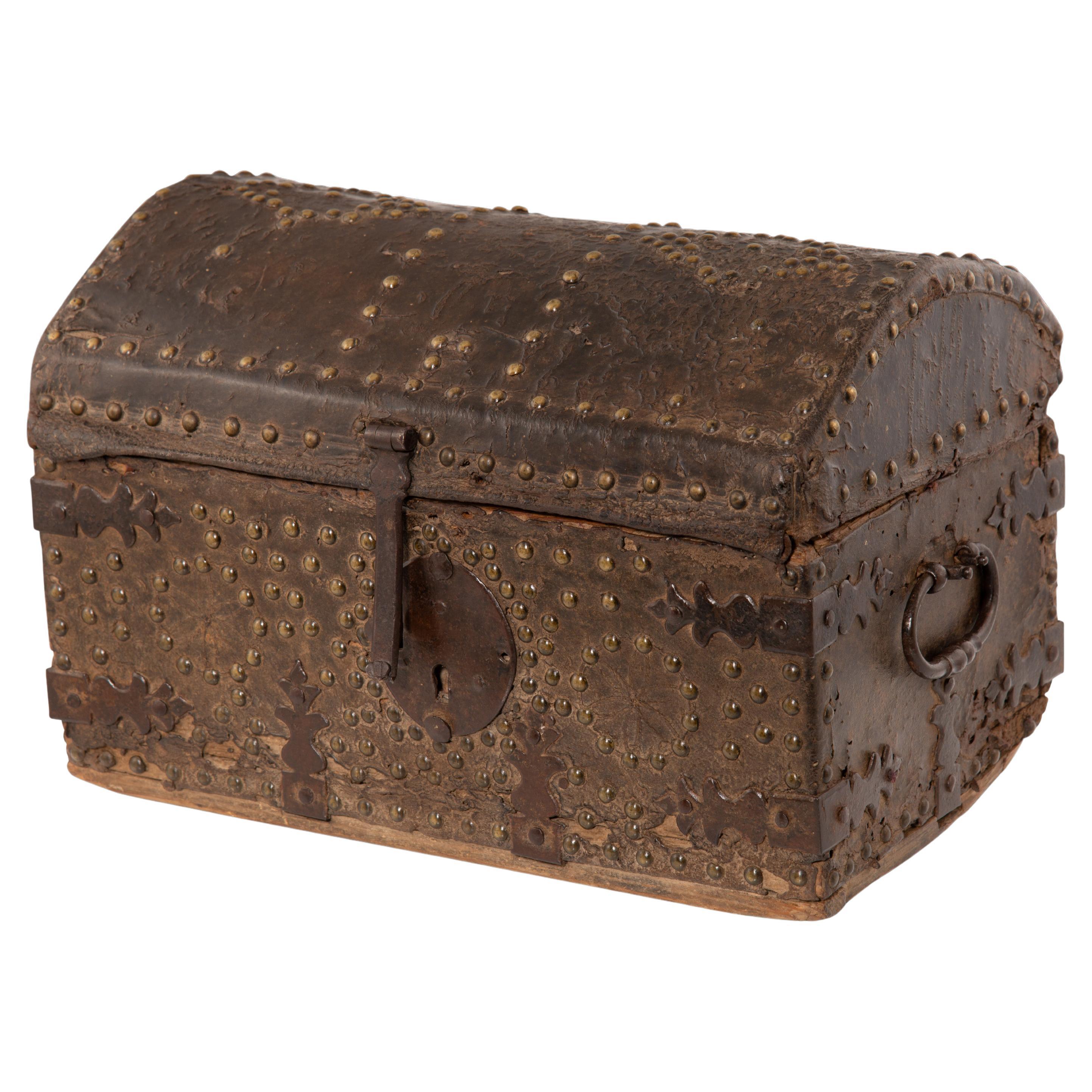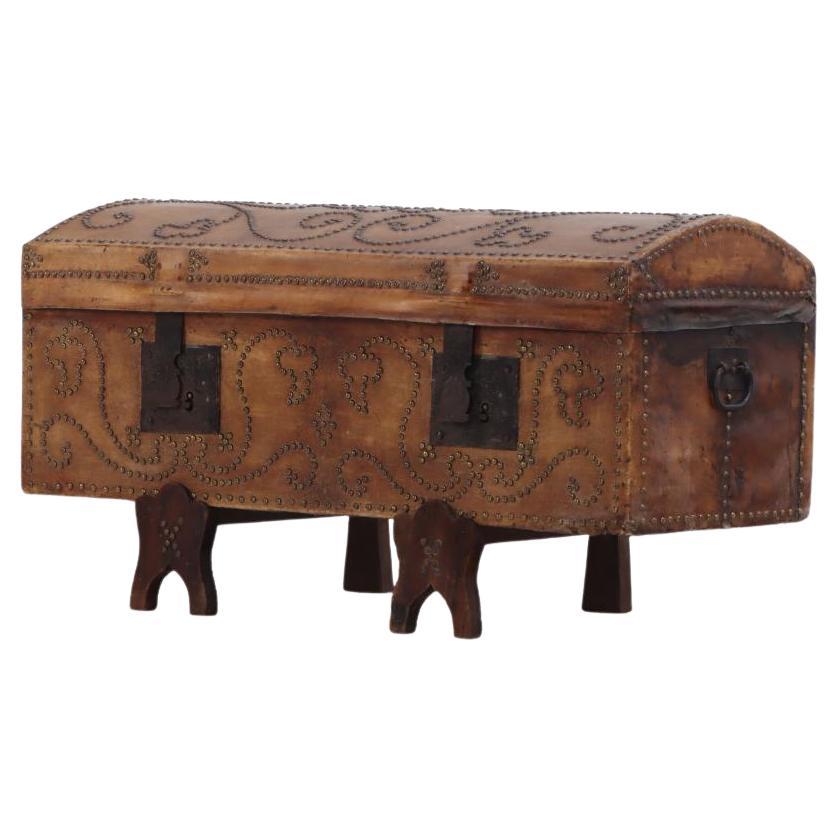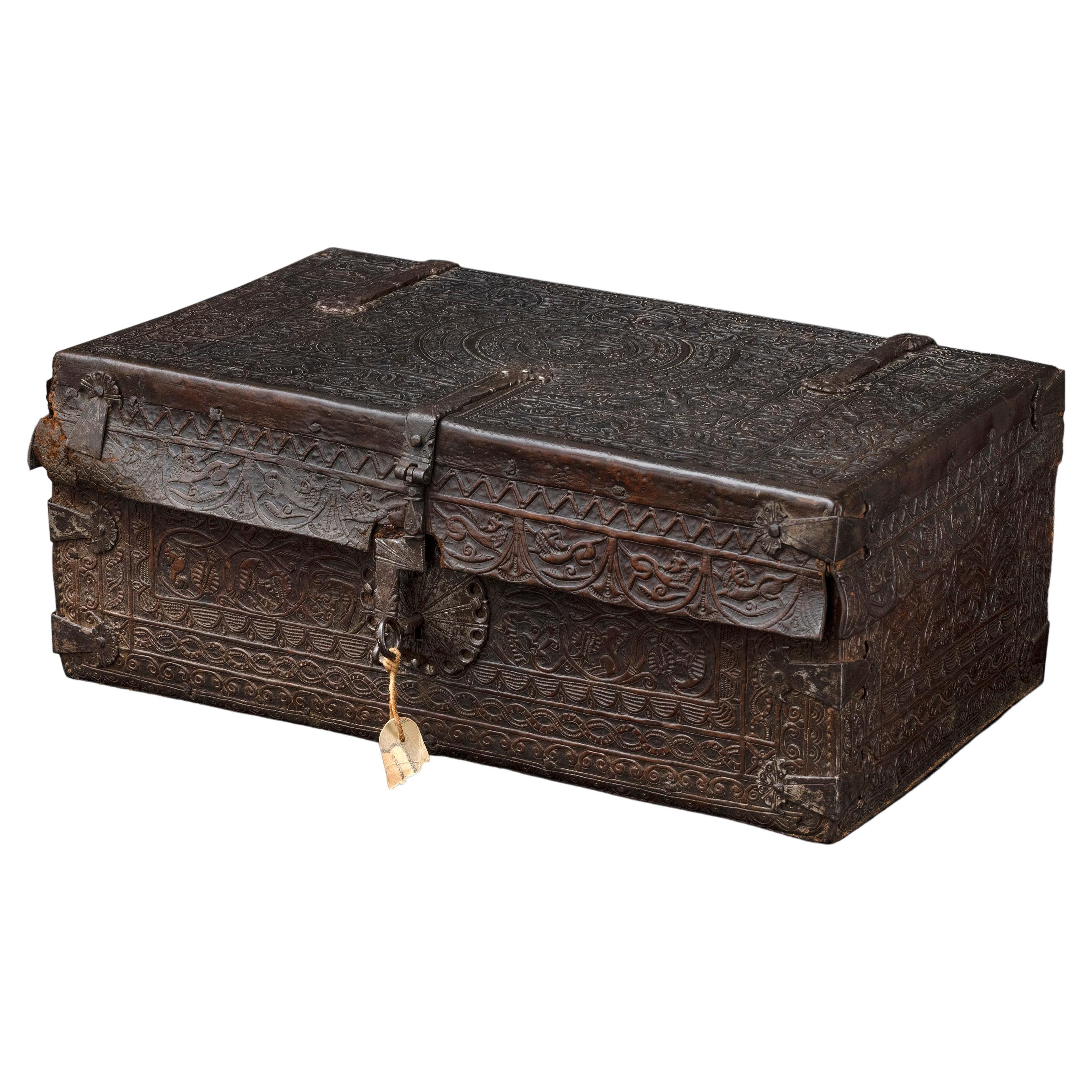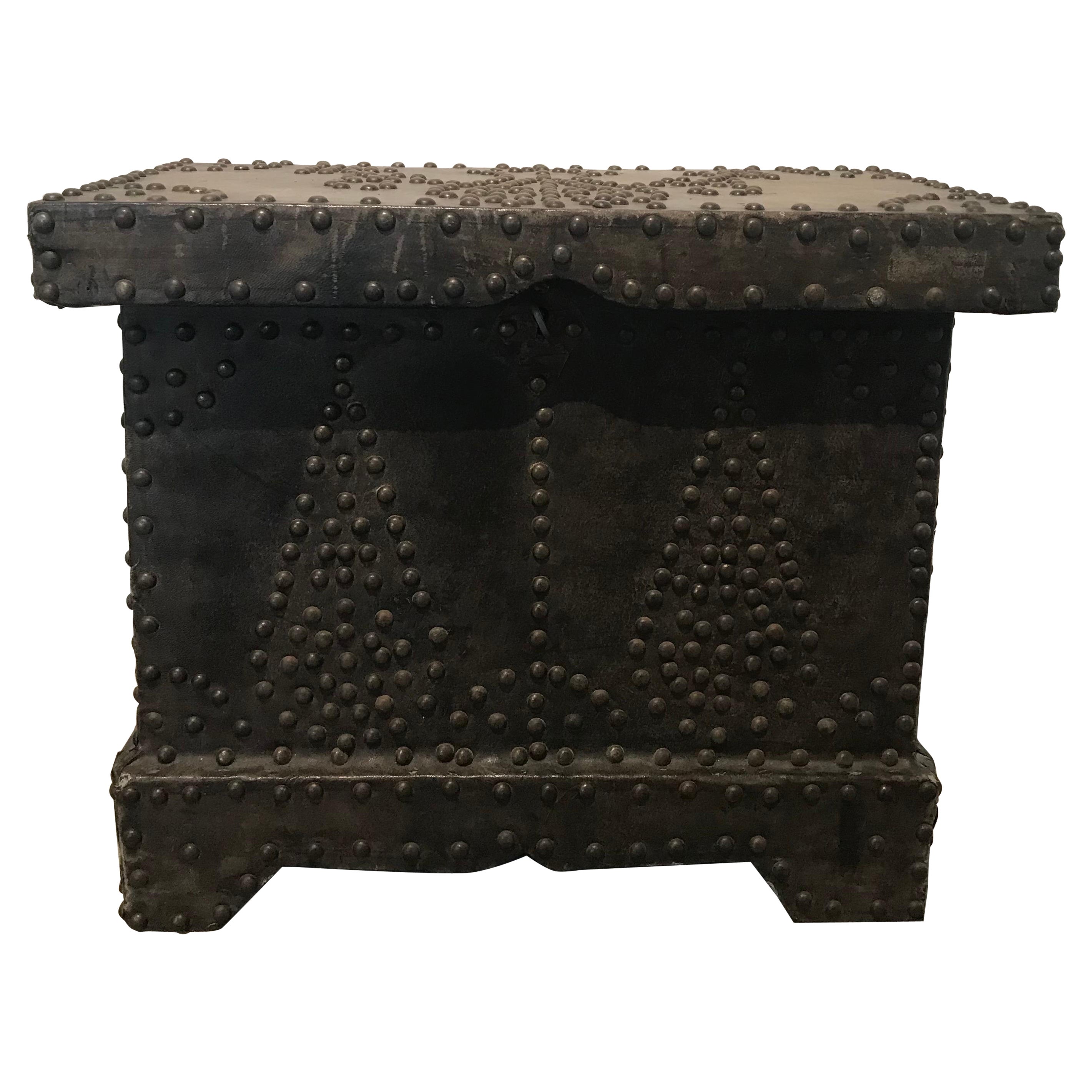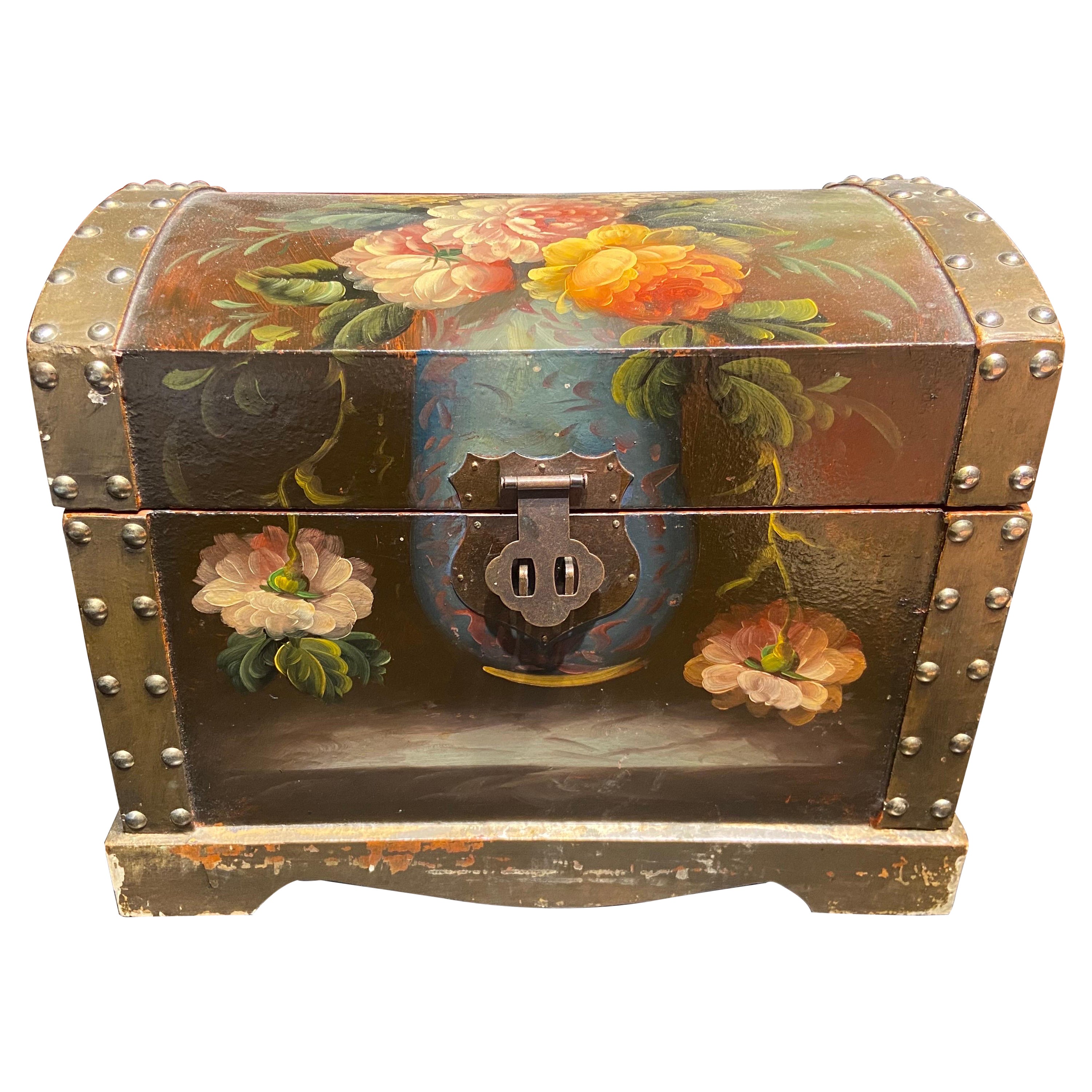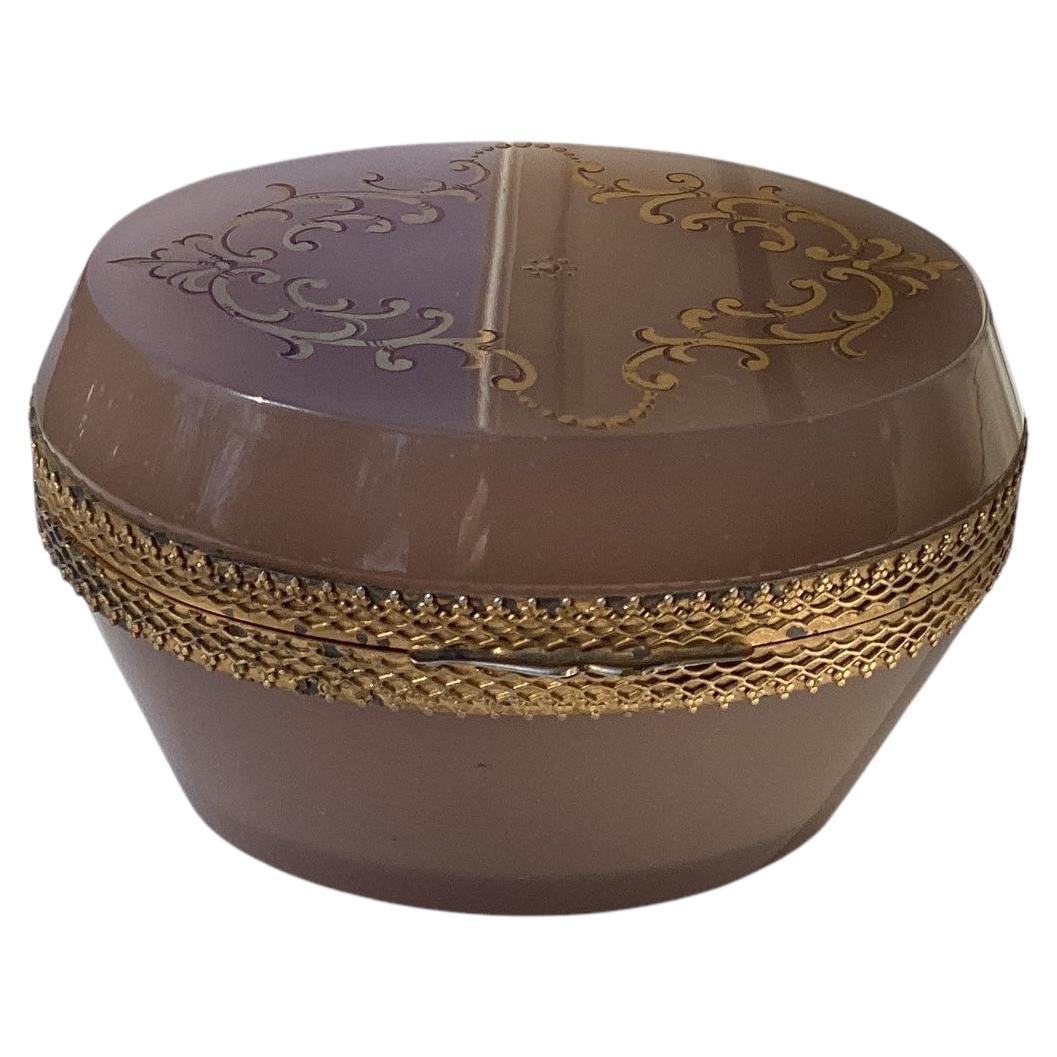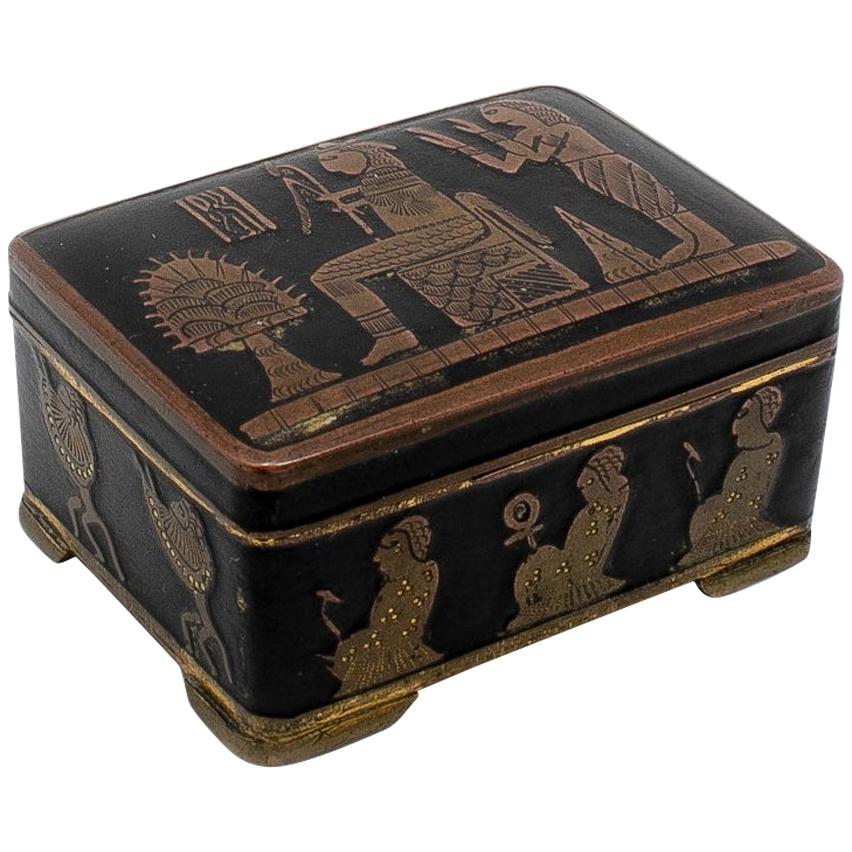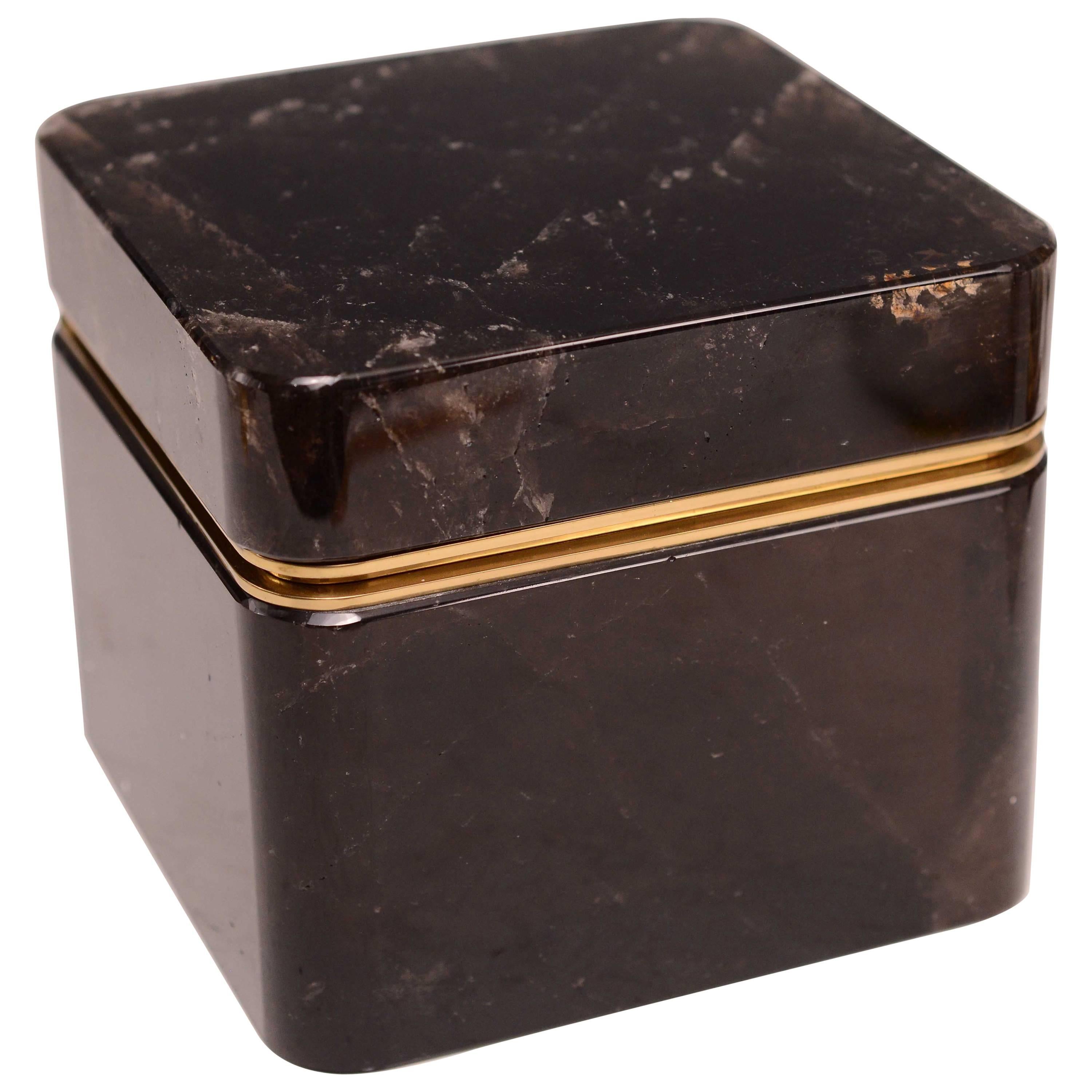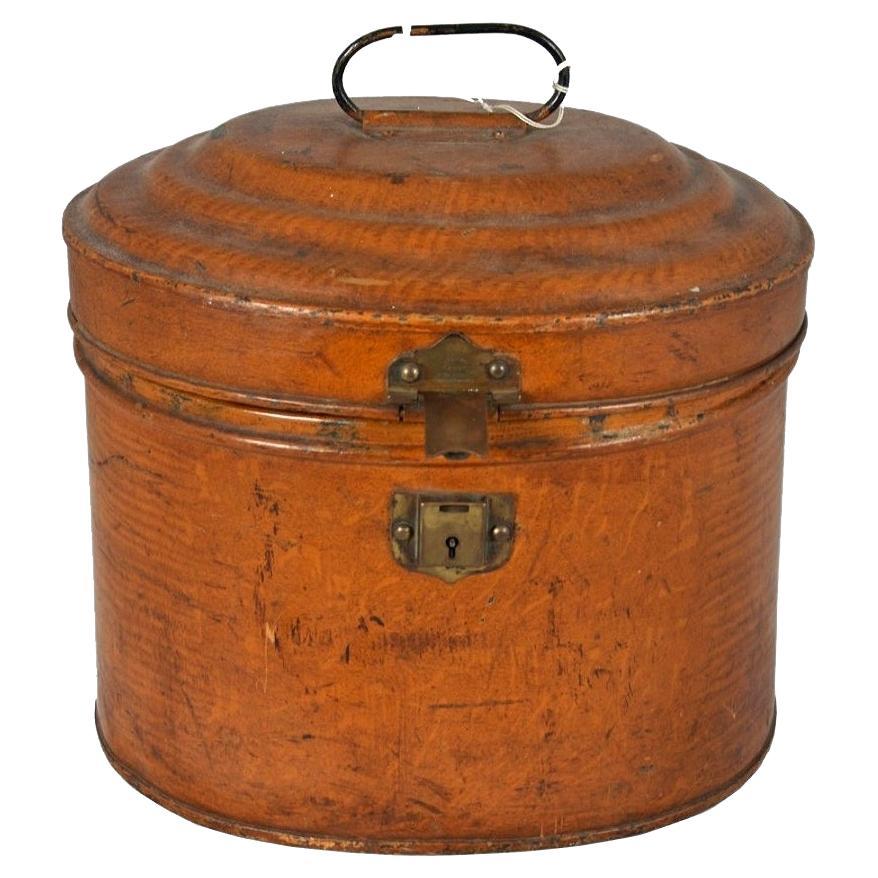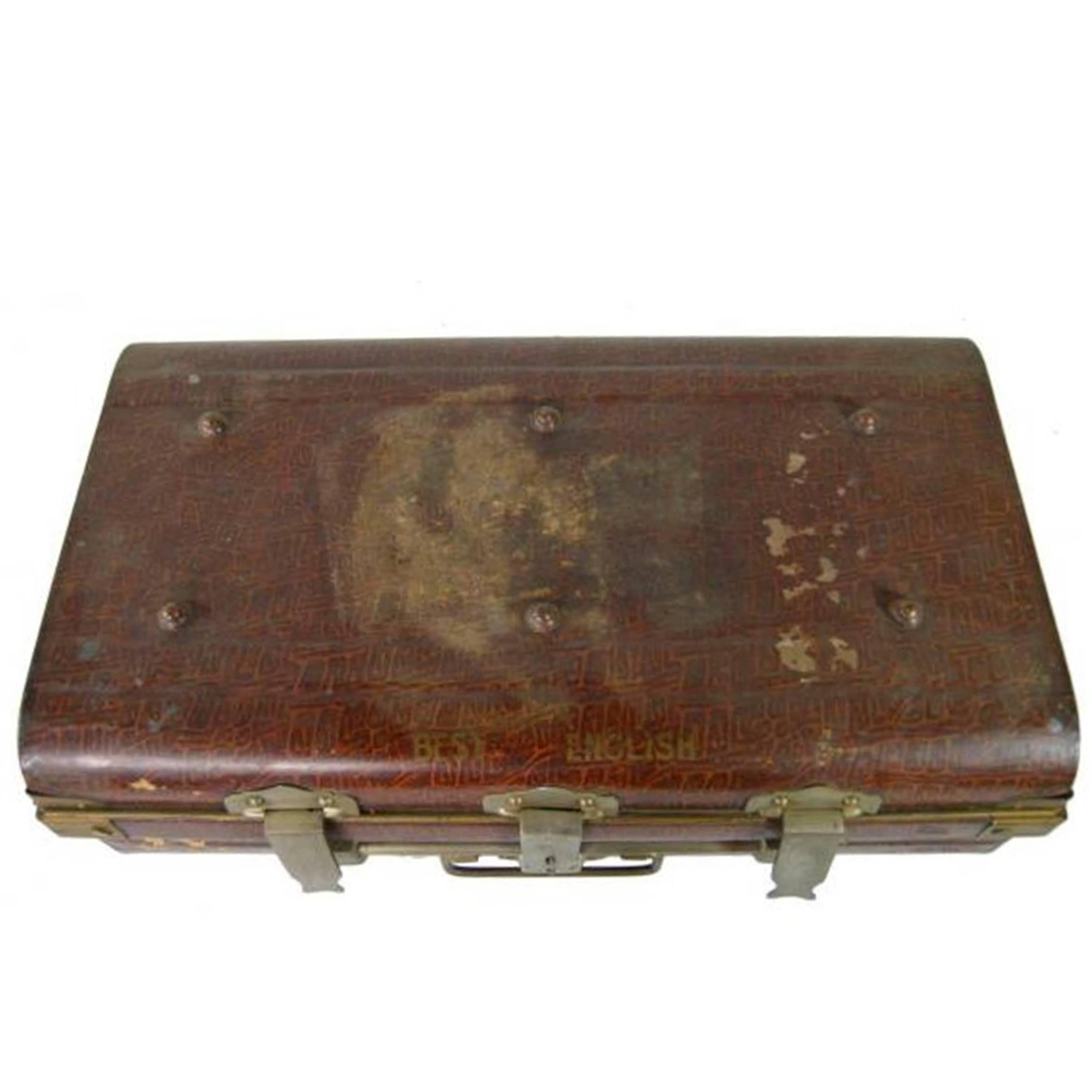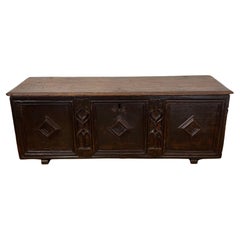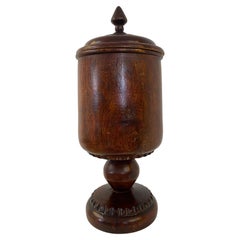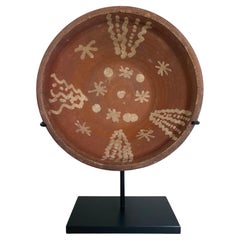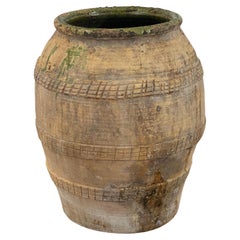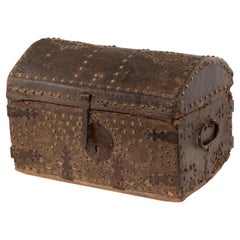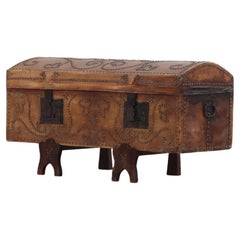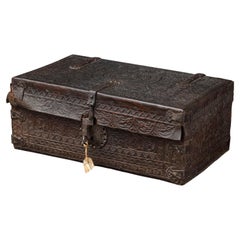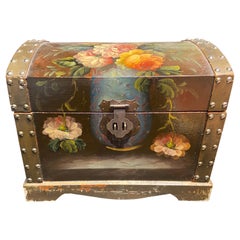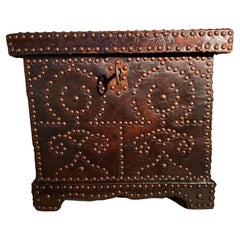
Antique Spanish Leather Trunk with Metal Decorations in Dark Brown Leather
View Similar Items
Want more images or videos?
Request additional images or videos from the seller
1 of 16
Antique Spanish Leather Trunk with Metal Decorations in Dark Brown Leather
About the Item
- Dimensions:Height: 15.75 in (40 cm)Width: 18.12 in (46 cm)Depth: 12.6 in (32 cm)
- Materials and Techniques:Leather,Patinated
- Place of Origin:
- Period:
- Date of Manufacture:1850
- Condition:Wear consistent with age and use. Minor losses.
- Seller Location:Schellebelle, BE
- Reference Number:1stDibs: LU1956327365932
About the Seller
4.5
Vetted Professional Seller
Every seller passes strict standards for authenticity and reliability
Established in 1997
1stDibs seller since 2016
96 sales on 1stDibs
Typical response time: 10 hours
Authenticity Guarantee
In the unlikely event there’s an issue with an item’s authenticity, contact us within 1 year for a full refund. DetailsMoney-Back Guarantee
If your item is not as described, is damaged in transit, or does not arrive, contact us within 7 days for a full refund. Details24-Hour Cancellation
You have a 24-hour grace period in which to reconsider your purchase, with no questions asked.Vetted Professional Sellers
Our world-class sellers must adhere to strict standards for service and quality, maintaining the integrity of our listings.Price-Match Guarantee
If you find that a seller listed the same item for a lower price elsewhere, we’ll match it.Trusted Global Delivery
Our best-in-class carrier network provides specialized shipping options worldwide, including custom delivery.More From This Seller
View AllAntique Gothic Spanish Chest/Trunk
Located in Schellebelle, BE
Exceptional Spanish Gothic Trunk from the early 16th century,
simple geometric lines and decorations,
good old patina and shine of the wood,
powerful piece of furniture,
ideal to...
Category
Antique 16th Century Spanish Blanket Chests
Materials
Wood
Antique Pharmacy Wooden Pot with Cover
Located in Schellebelle, BE
Exceptional big Italian Pharmacy pot with cover from Tuscany,Italy,
elegant object with few decorations, good old patina and warm finish of the wood, ...
Category
Antique 1890s Italian Decorative Boxes
Materials
Fruitwood
Antique Brown Colored Terracotta Bowl with beige painted decorations, Byzantine
Located in Schellebelle, BE
Elegant Terracotta Byzantine bowl in beige and brown colors,
mounted on an iron stand, very decorative object,
Around 1400 Ad.
Category
Antique 15th Century and Earlier Turkish Pottery
Materials
Terracotta
Spanish Green Glazed Terracotta Jar with Elegant Decorations
Located in Schellebelle, BE
A very exceptional Spanish Terracotta Jar,Urn from the town Girona,
great old patina and traces of a Green Color,
3 special lines of carved de...
Category
Vintage 1940s Spanish Planters and Jardinieres
Materials
Terracotta
Exceptional English Antique Leather Trunk with Crocodile Skin Top
Located in Schellebelle, BE
Beautiful trunk in Leather and Crocodile skin,
England, early 20th century,
nicely restored with great, stunning patina, brown leather trimming
and brass locks and clasps, corners.
Category
Early 20th Century English Trunks and Luggage
Materials
Leather
Antique Indo-Portuguese Table Cabinet
Located in Schellebelle, BE
Exceptional Indo-Portuguese table cabinet from the 17 th Century,
the rare Cabinet is in a very good condition, has a hinged front and has 8 drawers, b...
Category
Antique 17th Century Indian Models and Miniatures
Materials
Rosewood
You May Also Like
Studded trunk. Wood, leather, metal. Spain, 18th century.
Located in Madrid, ES
Studded trunk. Wood, leather, metal. Spain, 18th century.
A small chest or trunk with a rectangular base and a curved lid, decorated on the outside with a leather cover and a serie...
Category
Antique 18th Century European Neoclassical Revival Decorative Boxes
Materials
Metal, Other
A Spanish studded leather domed trunk, C 1870.
Located in Philadelphia, PA
Wrapped in a light shade of leather, the metal stud decoration stands out on a trunk raised on gothic arched wooden supports. It will look wonderful on a sofa table as a hiding spot ...
Category
Antique Late 19th Century Spanish Decorative Boxes
Materials
Metal
Boiled Leather Trunk, Spanish, 17th Century
Located in Bruxelles, BE
Leather trunk
Spanish, 17th century
Boiled Leather, wood and iron
Measures: 22 x 53 x 32 cm.
Provenance :
- collection Metz-Noblat, Château de Clevant, France
Rectangular trunk of the form and size of a small suitcase with wrought iron hinges and lock-plate.
Wood, covered with leather, cut and embossed with every surface of the thick cow hide covered in interlace, zoomorphic features.
The construction method is boiled leather, often referred to by its French translation cuir-bouilli: a process used to change flexible, vegetable-tanned leather into rigid, moulded objects. For shaping of the vegetable-tanned leather, heat and moisture were used, as indicated by the term boiled leather. No written medieval sources describing the production of decorated cuir bouilli objects survive, so knowledge of the process relies on the important studies of the Scottish leather historian John William Waterer. A large range of methods, materials and techniques could be used in various combinations. The vegetable-tanned leather, made supple with moisture and heat, was stuffed, shaped and nailed to the rigid wooden coffer support. The stuffing material was probably modeled beeswax or stearin wax. To shape the leather, to create its topography, « Cushions » were made by lacing a thread through an awl hole and attaching the flexible leather and stuffing to the rigid wooden support on the bottom. Then the decoration was done: lines were incised through the upper layer of the leather (epidermis) with different thicknesses of knives or needles. Contours were created with deep v-shaped cuts, decoration with thin incision and final details with a needle point. For the incision and pouncing stage, the leather was probably kept heated and moistened for suppleness.
Once dry, the leather would be hard and rigid.
the saturated leather is worked over a form, possibly even damp sand, with the pattern shaped using bone or wooden tools. Compare to metal, leather was lighter and it offered protection from cuts and punctures. Cuir bouilli objects were produced by specialist leather workers and needed skillful craftsmanship.
The surface is filled with roundels shaped foliages enclosing animals, lions and peacocks. The foliate arabesques creating a vegetal connection tweet the animals create the impression of a lush verdant space . The vegetal pattern here employed in combination with geometrical pattern came from the pre-islamic artistic traditions of the Byzantine and Sasanian empires. An aspect of Islamic geometry Is the basic symmetrical repetition and mirroring of the shapes that create a sense of harmony.
The decoration of this truck is inspired by the islamic « arabesque » a form of vegetal ornament composed of spirals, intertwining plants and abstract curvilinear motifs. An arabesque character is given to the birds of the decorations through extreme stylisation. This arabesque maintained the classical tradition of median symmetry, freedom in Detail and heterogeneity of ornament.
The presence of the peacocks is a paradisiacal allusion: in popular Islamic literature they were among the original inhabitants of the garden of Paradise expelled with Adam and Eve. Peacock as a decorative motif may have originated in the West, despite their eastern provenance. There was an ancient belief that the flesh and feathers of peacock do not decay. This led to the peacock becoming a christian symbol for Christ’s resurrection.
Renowned for their decorative wall hangings, seventeenth-century Spanish leatherworkers also produced utilitarian objects, such as this trunk. A similar trunk is on display at the Metropolitan museum of art ( 09.158.1).
Related literature :
Davies L. 2006. Cuir bouilli. Conservation of leather and related materials, 94-102, Oxford: elsevier Butterworth-Heinemann
Grabar, Oleg. The Mediation of Ornament. Princeton: Princeton University Press, 1992
Gabriela Germana Roquez, "El mueble en el Peru en el siglo XVIII...
Category
Antique 17th Century Decorative Boxes
Materials
Iron
19th Century, French, Hand Painted in Flowers Wooden Box with Metal Decoration
Located in Sofia, BG
Beautiful hand painted wooden box decorated in very romantic style with lovely flowers on the top and front side. The edges of the box are made of metal and there are metal handles a...
Category
Antique Late 19th Century French Decorative Boxes
Materials
Wood
$796 Sale Price
20% Off
Antique Oval Opaline Box with Gilt Decoration
Located in Chapel Hill, NC
Antique Oval Opaline Box with Gilt Fitting and applied gold decoration.
Category
Antique Early 1900s Decorative Boxes
Materials
Gold
20th Century Leather/Wood Studded Metal Trunk/Side Table
Located in Chicago, IL
Handsome leather studded trunk with antique brass nailheads in a lovely motif. Works well as a side table or object d'art.
Category
20th Century American Decorative Boxes
Materials
Metal
Recently Viewed
View AllMore Ways To Browse
Spanish Leather Box
Antique Spanish Trunk
Spanish Leather Trunk
Enameled Lighter Case
Iron Strong Box
Sterling Silver Box With Compartments
19th Century Sri Lankan Furniture
Antique Furniture Tunbridge Wells
Antique Treen Treen
Ebony Silver Box
English Letter Box
Indian Carved Wood Box
Wooden Tool Box
19th Century Chinoiserie Box
Antique Collar Box
Bone Box Brass
English Antique Wooden Boxes
Floral Trinket Box
